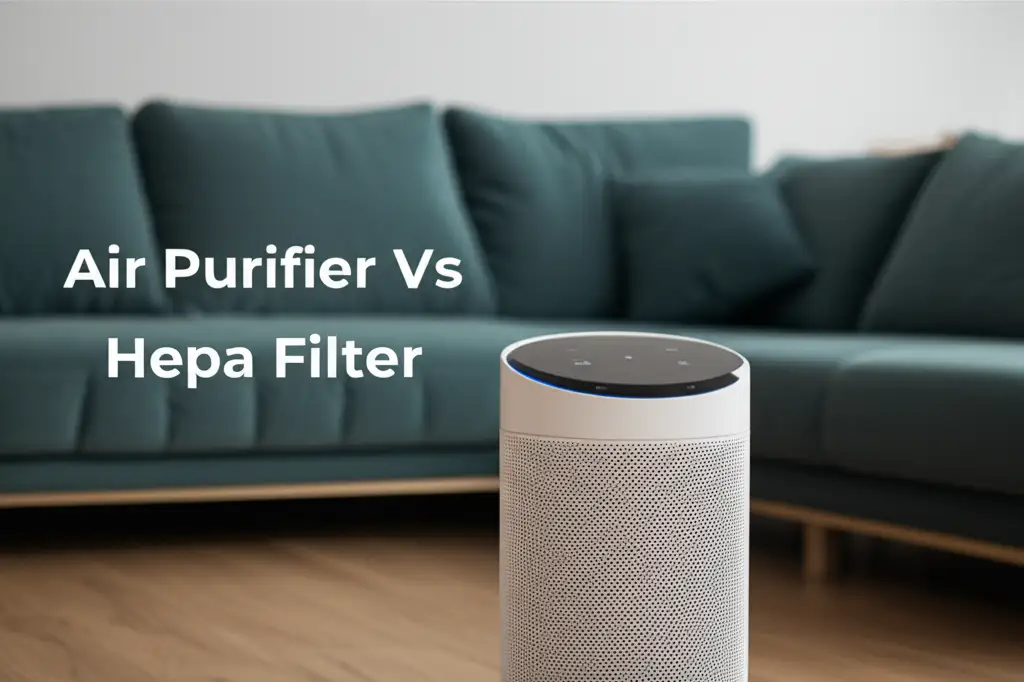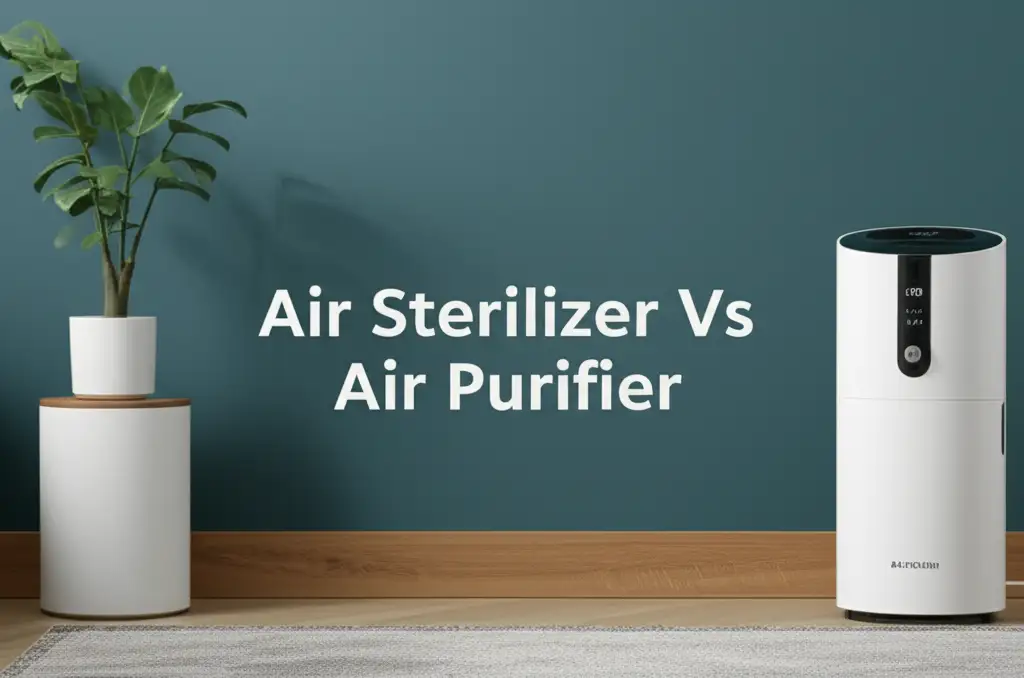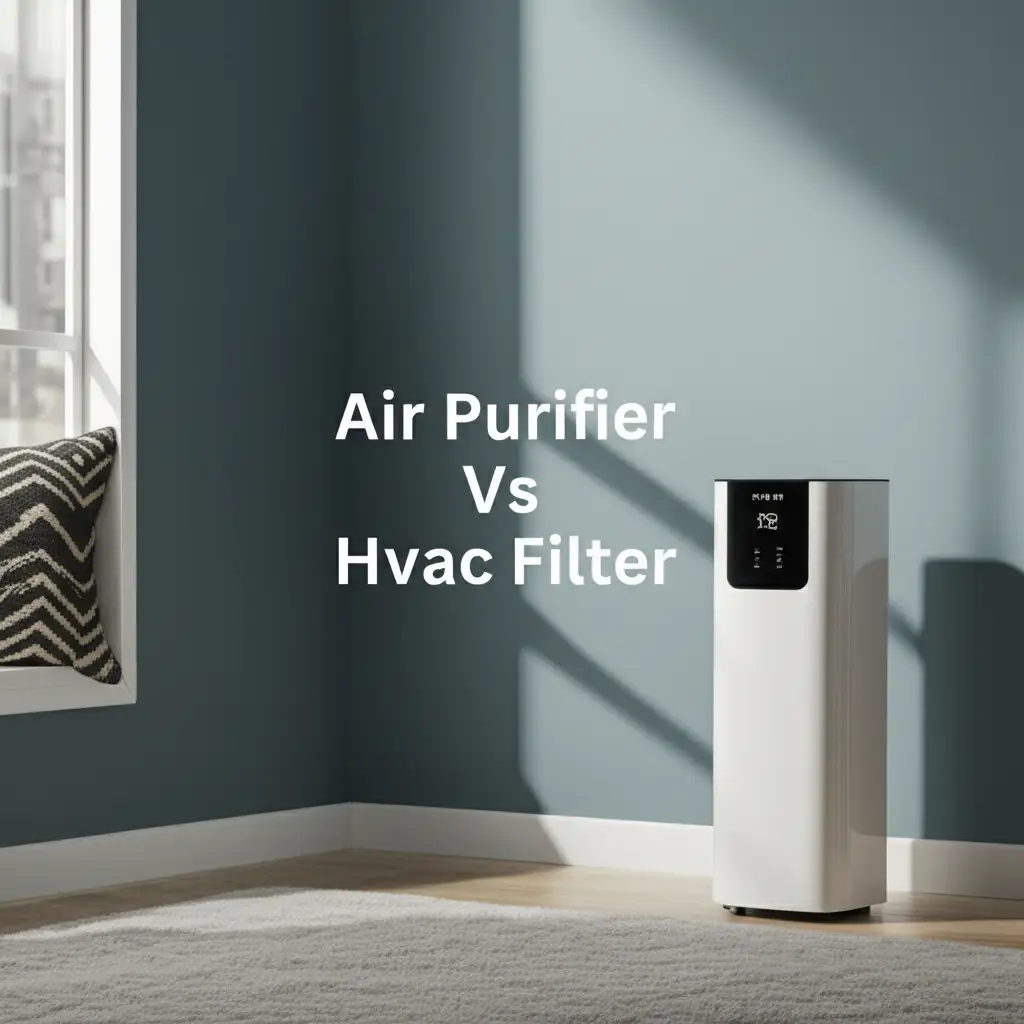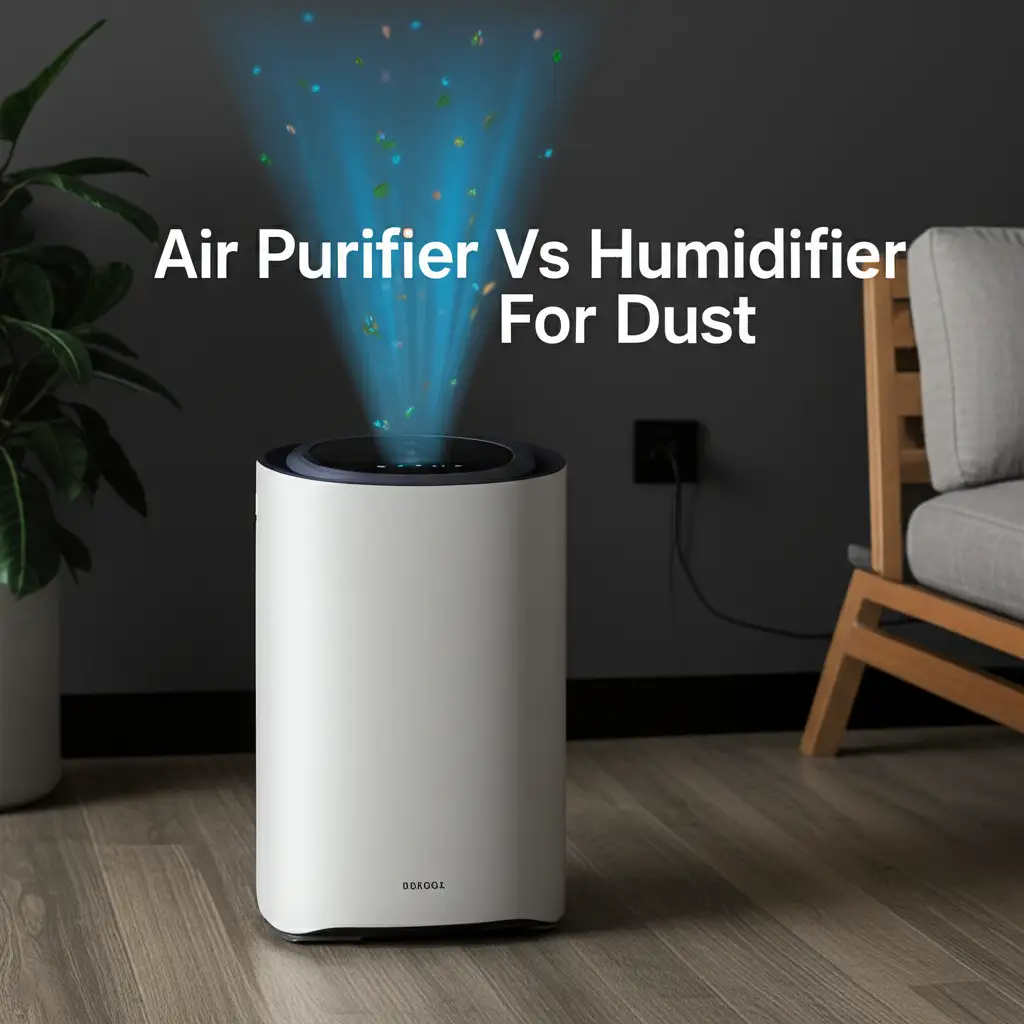· Elira Thomsen · Home Air Quality · 21 min read
Air Purifier Vs Air Ionizer
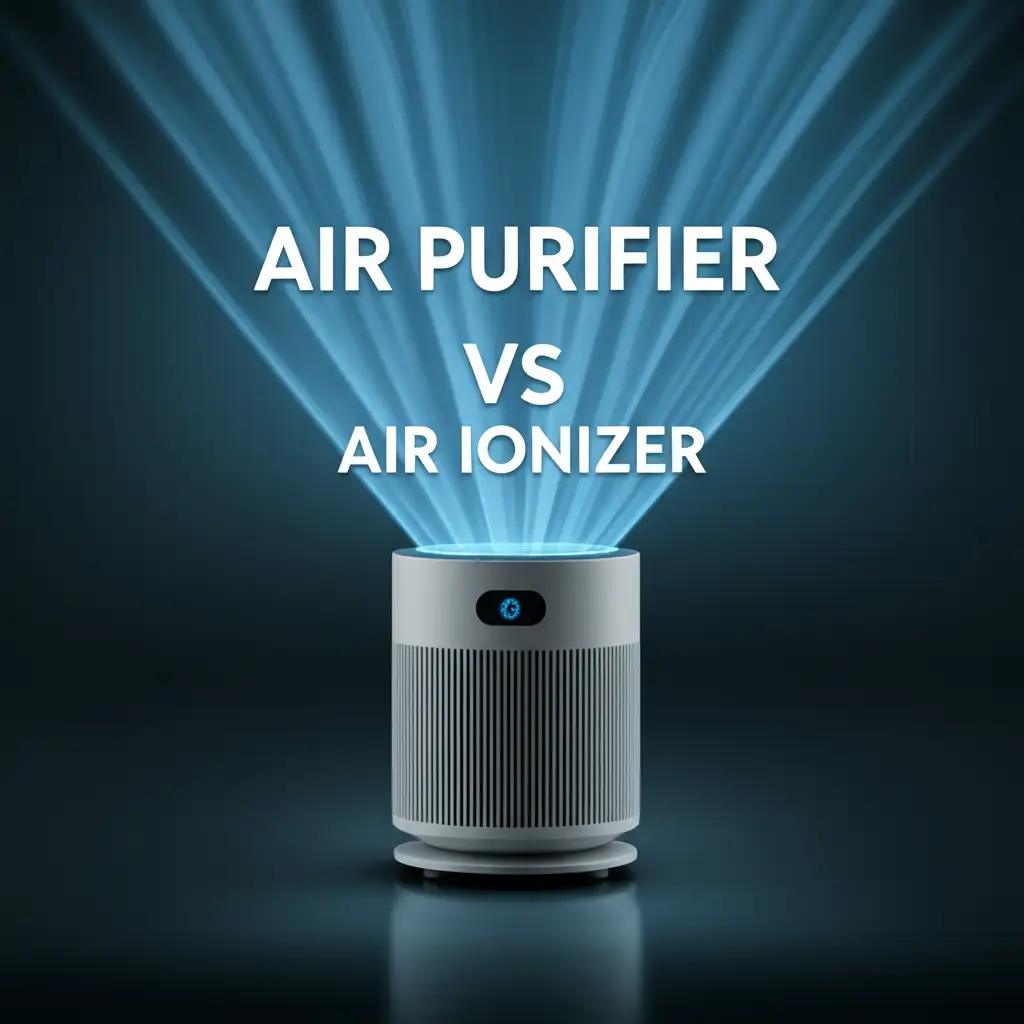
Air Purifier Vs Air Ionizer: Which One Cleans Your Home Air Best?
Have you ever walked into your home and felt like the air was… heavy? Perhaps you noticed lingering cooking smells, pet odors, or just a general stuffiness. It is a common feeling for many of us. We spend a significant amount of our lives indoors. The quality of the air we breathe inside our homes directly impacts our health and comfort. This is why devices like air purifiers and air ionizers have become popular tools. They promise to improve indoor air quality.
I understand the confusion many people face when trying to pick between these two devices. Both aim to make your air cleaner, but they use very different methods. One might be perfect for your specific needs, while the other might not be the right fit. This article will help you understand the core differences between an air purifier vs air ionizer. We will explore how each device works. We will look at their benefits and their potential downsides. By the end, you will know which device is the better choice for your home.
Takeaway
- Air Purifiers Filter: They capture particles and gases physically using filters like HEPA and activated carbon.
- Air Ionizers Charge: They release ions to clump particles, making them fall out of the air.
- Purifiers are Comprehensive: They remove a wide range of pollutants.
- Ionizers are Specific: They are effective against airborne particles but not gases or odors.
- Ozone is a Concern: Some ionizers can produce ozone, a lung irritant.
- Combination Units Exist: Some devices offer both filtration and ionization.
Deciding between an air purifier and an air ionizer depends on your specific air quality concerns. Air purifiers use physical filters to trap pollutants like dust, allergens, and VOCs, offering broad-spectrum cleaning. Air ionizers release charged particles that clump airborne pollutants, causing them to settle, but some can produce ozone. Consider your health needs and the types of pollutants you wish to remove.
Understanding Air Purifiers: How They Work
An air purifier is a device designed to remove contaminants from the air in a room. These contaminants include dust, pollen, pet dander, mold spores, and volatile organic compounds (VOCs). I think of an air purifier as a sophisticated vacuum cleaner for the air. It actively pulls air in, processes it, and then releases cleaner air back into the room.
The most effective air purifiers use a multi-stage filtration system. This system ensures a comprehensive cleaning process. The first stage often involves a pre-filter. This pre-filter catches larger particles like hair and significant dust. This extends the life of subsequent, more delicate filters. After the pre-filter, the air typically passes through a HEPA filter. A HEPA filter is the core component of most high-quality air purifiers. HEPA stands for High-Efficiency Particulate Air. A true HEPA filter captures at least 99.97% of airborne particles that are 0.3 microns in size. This includes many common allergens and microscopic pollutants.
Beyond particle removal, many air purifiers also include an activated carbon filter. This type of filter is different from a HEPA filter. Activated carbon filters excel at absorbing odors, gases, and VOCs. VOCs come from things like paints, cleaning products, and even new furniture. This combination of filters means an air purifier can tackle a wide range of indoor air issues. I appreciate how these devices provide a thorough clean. They improve overall indoor air quality. Maintaining these filters is important for performance. Just as you would regularly inspect and how to clean air vents for optimal airflow, air purifier filters need attention too.
Exploring Air Ionizers: The Science Behind Them
Air ionizers operate on a completely different principle than air purifiers. Instead of drawing air through physical filters, an air ionizer releases charged particles, specifically negative ions, into the air. These negative ions are invisible and harmless to people. They are abundant in natural environments, like near waterfalls or after a thunderstorm. The ionizer device generates these ions using high voltage.
Once released, these negative ions attach themselves to airborne particles. This includes dust, pollen, smoke, and pet dander. When an ion attaches to a particle, it gives the particle an electrical charge. These newly charged particles then become attracted to other charged particles. This causes them to clump together. As these clumps grow larger, they become too heavy to remain suspended in the air. They then fall out of the air. They may settle onto surfaces like floors, furniture, or walls.
This process can effectively reduce the number of airborne particles. You might notice fewer floating dust motes when an ionizer runs. However, the ionizer does not remove these particles from your home. It merely changes their location. The particles are still present in your environment, just on surfaces instead of in the air. This means you will need to clean surfaces more frequently. For example, if you have pets, you might find more pet dander settled on your floors. This is similar to how you would notice more dander when you need to how to clean carpet stains pets. The ionizer does not remove the source of the dander, it just helps it settle faster.
Air Purifier Benefits: Comprehensive Filtration for Health
Air purifiers offer a wide array of benefits, especially for those concerned about their health and indoor environment. I find their comprehensive filtration to be the main advantage. A quality air purifier effectively captures various airborne pollutants. This includes common allergens like pollen, dust mites, and pet dander. If you or someone in your household suffers from allergies or asthma, an air purifier can significantly reduce triggers. I have personally seen how it can make a home feel much more comfortable during allergy season.
Beyond allergens, air purifiers with HEPA filters also capture mold spores and bacteria. This helps create a healthier indoor atmosphere. The activated carbon filters go a step further. They are excellent at absorbing unpleasant odors. This means they can remove smells from cooking, smoke, and pets. They also tackle volatile organic compounds (VOCs). VOCs are gases released from household products like cleaning supplies, paints, and even new furniture. These gases can cause respiratory irritation and other health issues over time.
Another significant benefit is the reduction of airborne viruses. While no air purifier can guarantee complete protection from illness, some models are designed to capture microscopic particles. These particles can include certain viral aerosols. This adds an extra layer of protection during cold and flu season. Air purifiers provide continuous air cleaning. They work quietly in the background to maintain clean air levels. This proactive approach helps to improve overall indoor air quality around the clock. It truly contributes to a cleaner, fresher living space.
Air Ionizer Advantages: Reducing Airborne Particles
Air ionizers also offer specific advantages, particularly concerning the reduction of airborne particles. I see their main strength in their ability to clear the air of tiny floating dust and particulate matter. Unlike a filter that physically blocks particles, an ionizer makes these particles fall out of the air. This can lead to a noticeable reduction in visible dust motes in a sunlit room. It gives the impression of very clear air.
One key advantage is that ionizers do not require filter replacements. This can save you money and time on maintenance. You do not need to purchase new filters regularly. You also avoid the task of changing dirty filters. This makes ionizers a low-maintenance option for certain air cleaning needs. They also operate very quietly. Many ionizers have no moving parts like fans, or they use very small, quiet fans. This makes them ideal for bedrooms or quiet spaces where noise is a concern.
Ionizers are often more compact and less expensive than traditional air purifiers. Their simpler design means they can be more portable. You can move them easily from room to room. They are effective at quickly clearing smoke and other fine particulates from the air. For example, if you have a fireplace or someone occasionally smokes indoors, an ionizer can help remove the visible smoke particles faster. They create a cleaner visual environment by making airborne particles settle quickly. This ability to make particles drop out of the air is their primary benefit.
Potential Drawbacks: Air Purifiers and Maintenance
While air purifiers offer significant benefits, they also come with certain considerations, particularly regarding maintenance and ongoing costs. I often tell people that an air purifier is an investment that requires continued attention. The most significant aspect of this is filter replacement. Air purifiers rely on filters to trap pollutants. These filters, especially HEPA and activated carbon filters, become saturated over time. They cannot effectively capture new pollutants once they are full.
Regular filter replacement is crucial for the purifier to maintain its efficiency. The frequency of replacement depends on several factors. These include the device’s usage, the level of air pollution in your home, and the type of filter. Some filters need changing every 6 to 12 months. Others might last longer. Replacement filters can be quite expensive. This adds to the overall running cost of the air purifier. Failing to replace filters not only reduces the purifier’s effectiveness but can also cause it to circulate dirty air. It might even strain the device’s motor.
Another point to consider is the noise level. Most air purifiers use a fan to draw air through the filters. While many modern purifiers are designed to be quiet, especially on lower settings, they can still produce a noticeable hum. On higher settings, this noise can be disruptive. This is particularly true in bedrooms or quiet work areas. You should check the noise ratings (decibels) before purchasing. Lastly, air purifiers consume electricity. While not extremely high, it is an ongoing cost to factor into your budget. This is similar to how you consider the energy usage of other home appliances like your refrigerator or dishwasher. Ensuring your home is generally clean, including areas like how to clean a ceiling to reduce dust, can also help your air purifier work more efficiently by lessening the load.
Concerns with Ionizers: Ozone and Particle Redistribution
Despite their advantages, air ionizers carry specific concerns that are important to address, mainly regarding ozone production and how they handle particles. I always advise caution with ionizers for these reasons. My biggest concern with some air ionizers is their potential to produce ozone. Ozone is a gas that can irritate the lungs and respiratory system. While it is a natural component of the Earth’s upper atmosphere, ozone at ground level is a pollutant. It can worsen asthma symptoms. It can also cause coughing, chest pain, and shortness of breath, even in healthy individuals.
Not all ionizers produce harmful levels of ozone. Some newer models are designed to emit very little or no ozone. However, older or less regulated models might still pose a risk. It is crucial to check for certifications. Look for “California Air Resources Board (CARB) certified” labels. This certification indicates that the device meets strict limits for ozone emissions. I always recommend prioritizing devices with this safety standard.
The second major concern relates to how ionizers “clean” the air. They do not remove particles from your home. Instead, they cause particles to settle onto surfaces. This means dust, allergens, and other pollutants simply transfer from the air to your floors, furniture, and walls. You then need to clean these surfaces more frequently to truly remove the pollutants from your living space. If you do not clean regularly, these settled particles can be re-aerosolized and become airborne again. This defeats the purpose of “cleaning” the air. It is a fundamental difference from purifiers, which capture and contain particles.
Key Differences: Filtration vs. Ionization
Understanding the fundamental operational differences between air purifiers and air ionizers is critical. I see it as a clear distinction between active removal and active redistribution. Air purifiers use physical filtration. They draw air through a series of filters. These filters physically trap and hold pollutants. Think of it like a sieve that catches unwanted particles. A HEPA filter literally blocks microscopic particles. An activated carbon filter chemically absorbs gases and odors. This means the pollutants are contained within the filter media itself.
Air ionizers, on the other hand, do not use filters in the same way. Their method is to electrically charge airborne particles. They emit negative ions into the air. These ions attach to dust, pollen, and other tiny particles. This causes the particles to become heavy and fall out of the air. The particles land on surfaces like your floor, furniture, or curtains. The ionizer changes the state of the particles from airborne to settled. It does not actually remove them from your indoor environment.
This difference has significant implications for overall air quality. A purifier removes the pollutants from circulation. This makes your air genuinely cleaner. An ionizer clears the air of visible particles, but the pollutants remain in the room. They are just on surfaces where they can be disturbed and become airborne again. Therefore, an air purifier offers a more thorough and permanent removal of airborne contaminants. An ionizer provides a visual clearing of the air by making particles settle. This is the core distinction you must understand when choosing a device.
Choosing the Right Device for Your Home
Deciding between an air purifier and an air ionizer depends entirely on your specific needs and priorities. I believe a careful assessment of your home environment and health concerns is important. If your primary goal is comprehensive air cleaning, an air purifier is typically the better choice. They excel at removing a wide range of airborne pollutants. This includes allergens, pet dander, dust, mold spores, and even odors and volatile organic compounds (VOCs). If you or a family member suffers from allergies, asthma, or chemical sensitivities, a HEPA air purifier with an activated carbon filter offers robust protection. It truly removes these irritants from the air.
However, if your main concern is simply reducing visible airborne dust and you want a low-maintenance, quiet option, an air ionizer might suffice. They can be effective at clearing the air of fine particles, creating a visually cleaner space. They are also often more compact and less expensive upfront. But remember, you will need to increase your regular cleaning of surfaces. This is to remove the settled particles. Consider whether the potential for ozone production from some ionizers is a concern for you. Always look for CARB certification if you opt for an ionizer.
Ultimately, think about what you want to achieve. Do you need to tackle a variety of pollutants, including odors and gases? Choose an air purifier. Are you just trying to reduce visible dust and want a filter-free option? An ionizer could work, provided you clean surfaces diligently and confirm low ozone emissions. Some advanced units offer both functions, combining the benefits of filtration with the particle-clumping effect of ionization. This could be a hybrid solution if your budget allows.
Combination Units: The Best of Both Worlds?
Many modern air cleaning devices now combine the features of both air purifiers and air ionizers. I often see these referred to as “2-in-1” or “hybrid” units. These combination units aim to offer the comprehensive filtration of an air purifier alongside the particle-clumping benefits of an ionizer. The idea is to provide a more versatile and effective air cleaning solution. This might sound like the perfect answer for many homes.
A typical combination unit will first draw air through a multi-stage filter system. This usually includes a pre-filter, a true HEPA filter, and an activated carbon filter. This part of the device works exactly like a traditional air purifier. It physically captures dust, allergens, pet dander, mold, odors, and VOCs. After the air passes through these filters, the unit may then have an optional ionizer function. This ionizer releases negative ions into the already filtered air. The goal is to enhance the removal of any remaining microscopic particles that might have escaped the filters. It also helps to freshen the air.
The key advantage of these units is that the ionization step occurs after the primary filtration. This greatly reduces the concern about particles settling on surfaces. Most of the pollutants are already trapped by the filters. The ionization then serves as a supplementary cleaning step. It helps with ultra-fine particles or provides a fresh feeling in the air. When considering such a unit, ensure the ionization function can be turned off. This gives you control over ozone production, if any. I think these hybrid units offer a robust solution. They provide thorough air purification while leveraging the benefits of negative ions, often with better control over potential downsides.
Maintenance and Longevity: Keeping Your Air Cleaners Effective
Ensuring your air cleaning devices remain effective over time requires proper maintenance. I consider maintenance a critical part of owning either an air purifier or an air ionizer. Neglecting these tasks can severely reduce their performance and even shorten their lifespan. For air purifiers, the most important task is regular filter replacement. HEPA and activated carbon filters have a finite lifespan. They become clogged with pollutants over time.
You should check your device’s manual for recommended replacement schedules. This often ranges from every 6 to 12 months for primary filters. Pre-filters might need more frequent cleaning or replacement, perhaps every few months. Many pre-filters are washable. If you live in a particularly dusty environment or have pets, you might need to change filters more often. I regularly clean the exterior of my air purifier. This prevents dust buildup on the intake vents, ensuring proper airflow. This is similar to how you would clean other hard-to-reach areas to improve home cleanliness. Just as you might consider how to deep clean specific items, like ensuring a how to clean a straw hat lasts longer, air purifier filters need care too.
Air ionizers, in contrast, require less frequent maintenance. They do not have filters that need replacing. However, the ion-emitting needles or plates can accumulate dust and grime. This buildup can reduce the efficiency of ion production. I recommend periodically wiping these components with a damp cloth or cotton swab. Ensure the device is unplugged before cleaning. This simple step keeps the ionizer working optimally. For both types of devices, keep them on a flat, stable surface away from walls to ensure proper air circulation. Regular cleaning and timely filter replacements ensure your chosen device continues to provide clean air for years.
Real-World Scenarios: Who Needs Which Device?
Let us think about practical situations to help you decide between an air purifier and an air ionizer. I find it helpful to consider various household needs. If your home has residents with allergies, asthma, or other respiratory sensitivities, an air purifier is usually the superior choice. These devices are designed to capture microscopic allergens like pollen, dust mites, and pet dander. They also remove mold spores. Their comprehensive filtration directly addresses the triggers that cause respiratory issues. For example, if you consistently wake up with a stuffy nose or itchy eyes, a HEPA air purifier in your bedroom can make a significant difference.
If you are dealing with persistent odors, such as pet smells, cooking odors, or smoke, an air purifier with an activated carbon filter is highly effective. Activated carbon chemically absorbs these gaseous pollutants, neutralizing the smells. An ionizer will not remove odors or gases. It only makes particles settle. So, if your concern is fresh-smelling air, the purifier is your best friend.
Now, consider an ionizer. If your primary goal is to reduce general airborne dust and you want a quiet, filter-free device, an ionizer can be a good option. They are effective at making visible dust and fine particulates fall out of the air. This makes the air look clearer. They are often a choice for people who do not have specific allergies but want to lessen the amount of floating dust. However, you must be prepared for increased surface cleaning. The settled dust needs regular wiping or vacuuming. I would also recommend an ionizer only if it is CARB-certified. This ensures minimal ozone production. Consider your budget and specific air quality issues to make the right choice for your home.
Beyond the Basics: Other Factors to Consider
When choosing between an air purifier and an air ionizer, many factors go beyond their basic operating principles. I believe considering these additional elements ensures you pick the best device for your specific needs. First, consider the room size. Air purifiers and ionizers have specific coverage areas, usually measured in square feet or CADR (Clean Air Delivery Rate). You must select a device that is appropriately sized for the room you intend to use it in. An undersized unit will not be effective. An oversized unit might be overkill and cost more.
Noise level is another crucial factor, especially if the device will operate in a bedroom or a quiet office. As I mentioned, air purifiers use fans, which produce noise. Check the decibel (dB) rating. Many models have a “sleep mode” or lower settings that reduce noise. Ionizers are generally quieter since they have fewer moving parts, but some can produce a faint static or crackling sound.
Energy consumption is also worth considering. Both devices use electricity, but consumption varies greatly by model and setting. Look for Energy Star certified models if energy efficiency is important to you. This can save on long-term operating costs. Think about filter availability and cost for air purifiers. Some proprietary filters can be expensive or hard to find. Lastly, features like smart controls, air quality sensors, auto mode, and filter replacement indicators can add convenience and enhance the user experience. These features help you manage the device more effectively. They ensure it always runs at its optimal performance for cleaner air.
FAQ Section
Q1: Do air ionizers produce harmful ozone?
Some air ionizers can produce ozone as a byproduct. Ozone is a lung irritant that can worsen respiratory conditions. It is important to check if an ionizer is certified by the California Air Resources Board (CARB). This certification ensures it meets strict low-ozone emission standards. Many newer ionizers produce very little or no harmful ozone.
Q2: Can an air ionizer remove odors like smoke or pet smells?
No, air ionizers are not effective at removing odors or gases. They work by charging airborne particles, causing them to settle. Odors and gases are molecular and do not get clumped or removed by ionization. For odor removal, an air purifier with an activated carbon filter is necessary.
Q3: How often do air purifier filters need to be replaced?
The frequency of filter replacement depends on the specific air purifier model, usage, and air quality. Generally, HEPA filters last 6 to 12 months, while activated carbon filters might need replacing every 3 to 6 months. Pre-filters can often be cleaned every few weeks or months. Always check your device’s manual for specific recommendations.
Q4: Are air purifiers noisy to operate?
Air purifiers use fans to draw air, so they produce some noise. The noise level varies by model and fan speed setting. Many modern purifiers are designed for quiet operation, especially on lower settings or in sleep mode. Higher fan speeds will produce more noticeable noise. Look for models with a low decibel (dB) rating.
Q5: Can an air ionizer replace an air purifier for allergy sufferers?
No, an air ionizer cannot fully replace an air purifier for allergy sufferers. Air purifiers with HEPA filters physically capture allergens like pollen, dust mites, and pet dander. Ionizers make these particles settle onto surfaces, meaning they are still in the environment. For true allergen removal, an air purifier is essential.
Conclusion
I hope this detailed comparison has shed light on the core differences between an air purifier vs air ionizer. We have explored how air purifiers actively filter pollutants using multi-stage systems like HEPA and activated carbon, effectively removing allergens, dust, odors, and VOCs from your indoor air. We also discussed how air ionizers work by charging particles, making them clump and fall onto surfaces, offering a quieter and filter-free solution but without truly removing pollutants from your home.
The choice ultimately comes down to your specific needs. If you seek comprehensive air cleaning for allergies, asthma, or odor control, an air purifier is the clear winner. Its ability to capture and contain a wide range of airborne contaminants provides a truly healthier indoor environment. If reducing visible dust and having a low-maintenance, quiet device is your primary goal, and you are diligent about surface cleaning, a CARB-certified air ionizer might suffice.
For the most robust solution, consider a combination unit that offers both filtration and optional ionization. Whichever device you choose, investing in cleaner indoor air is an investment in your health and comfort. Take control of your home’s air quality today. Make an informed decision for a fresher, healthier living space.


